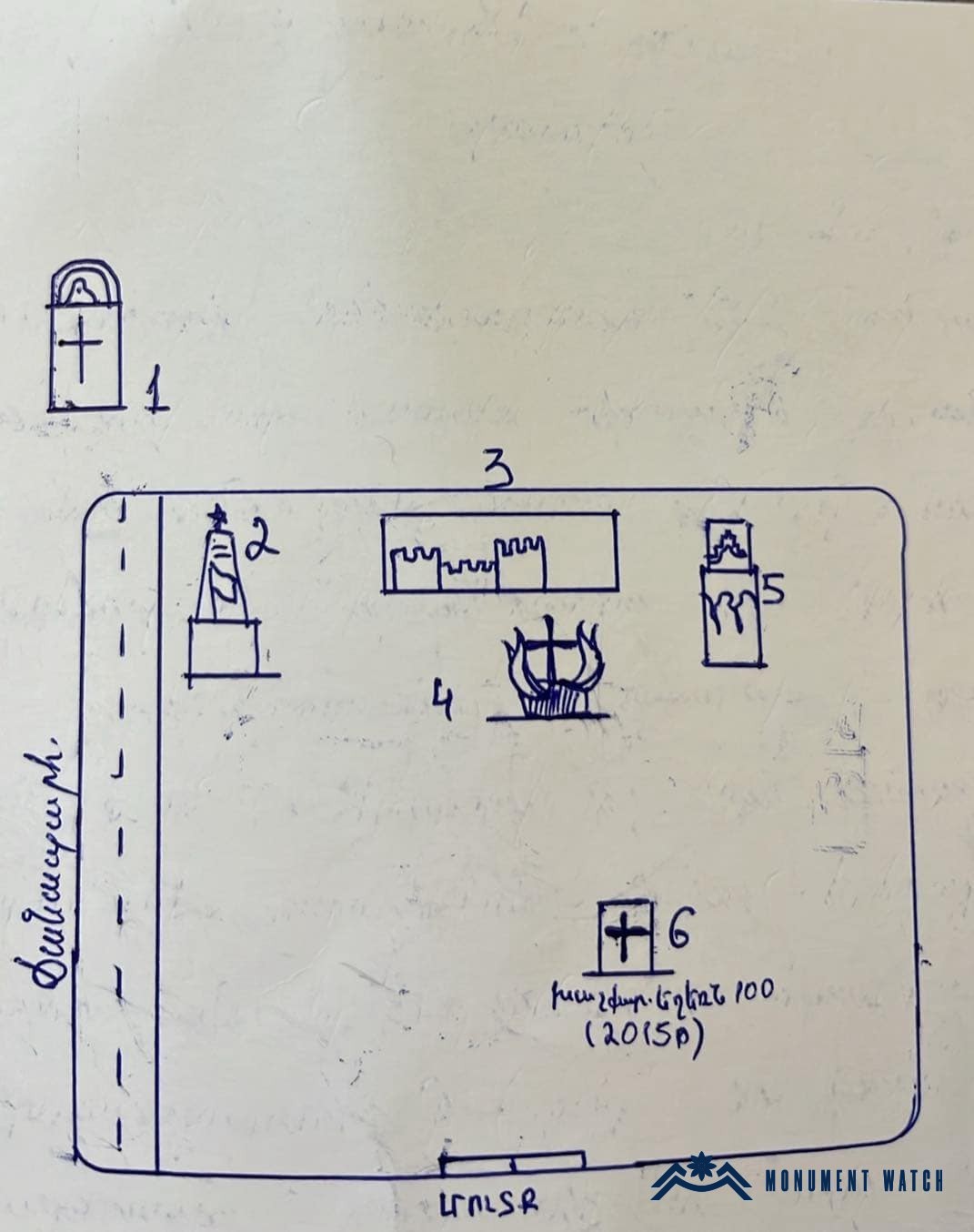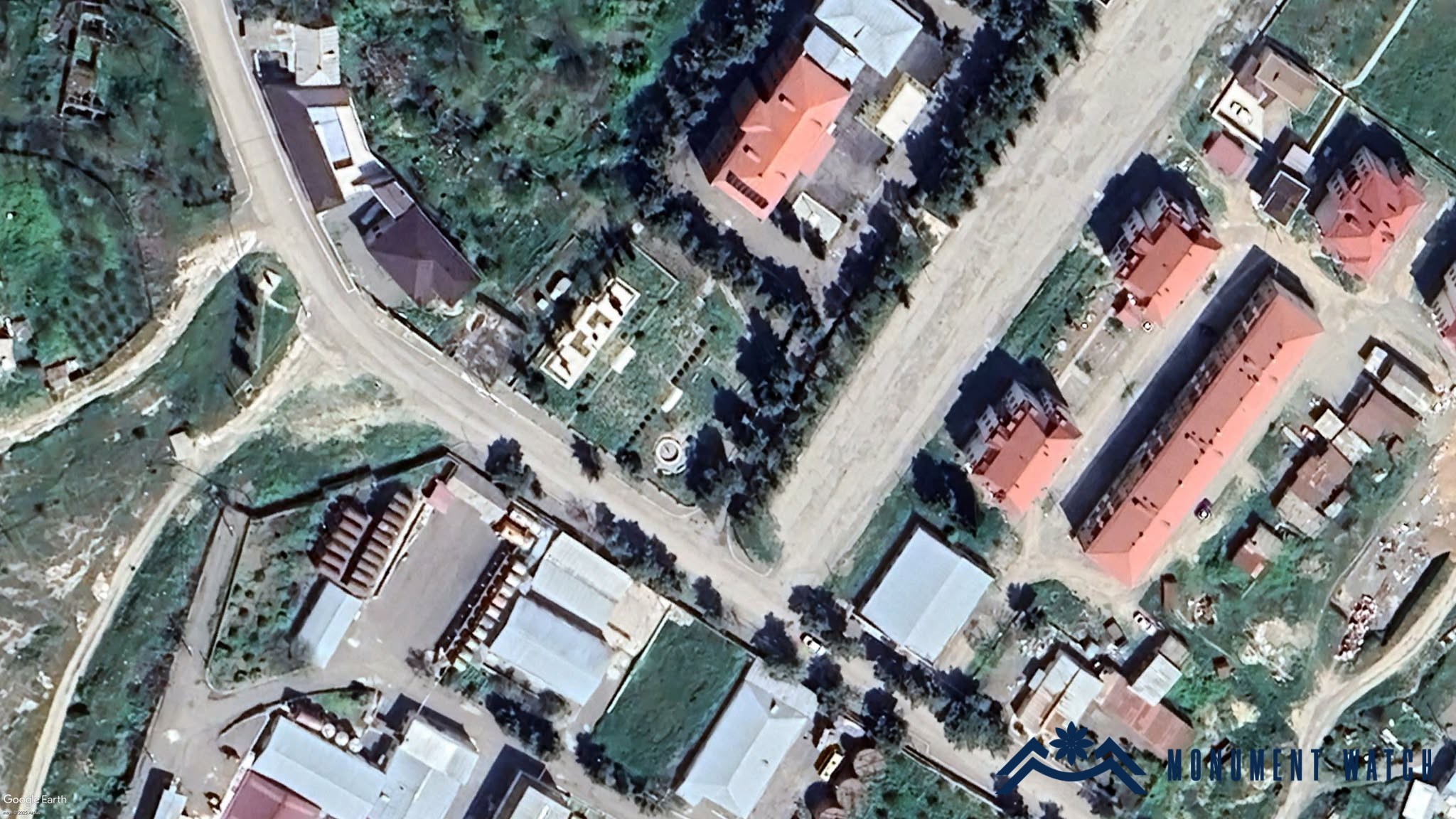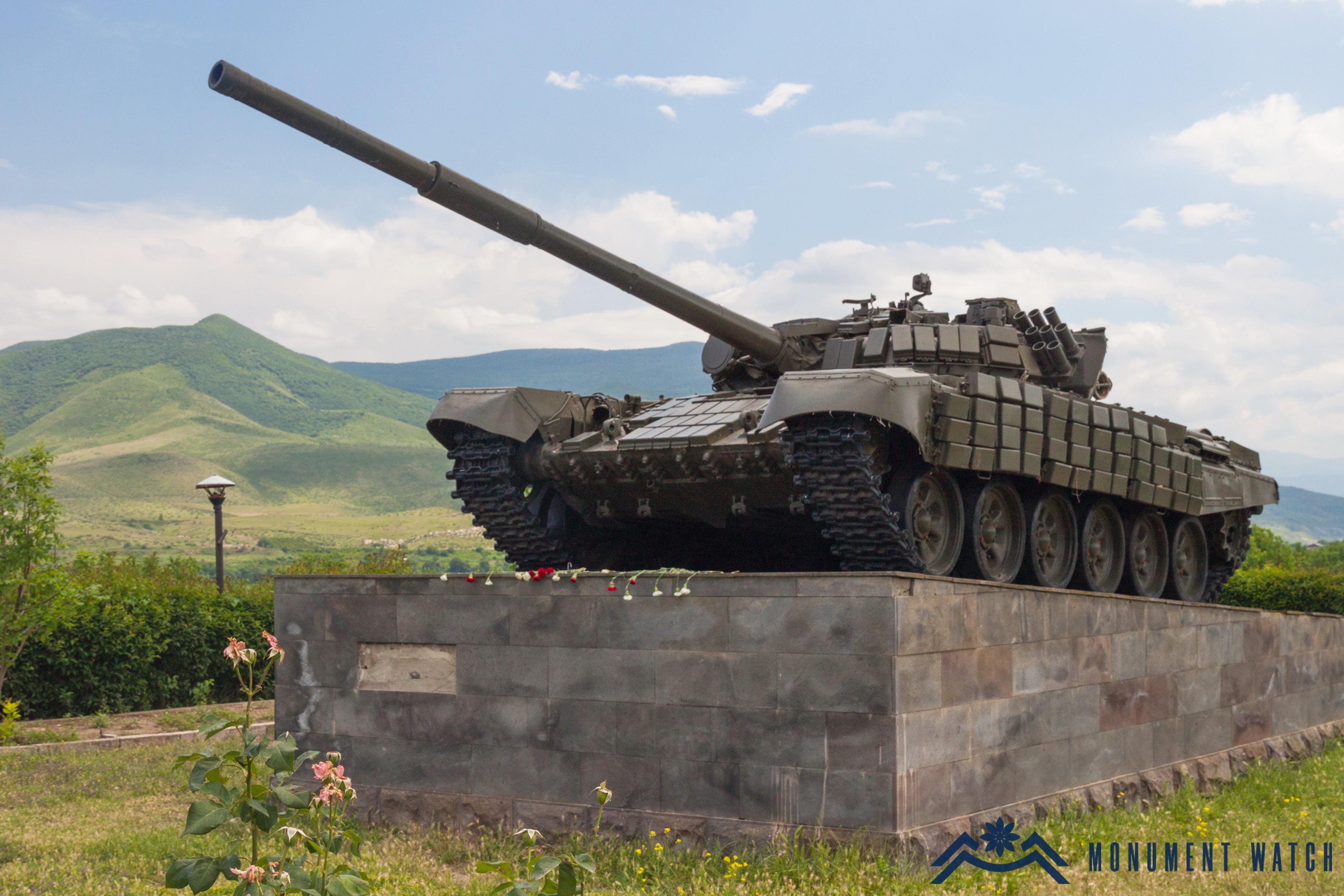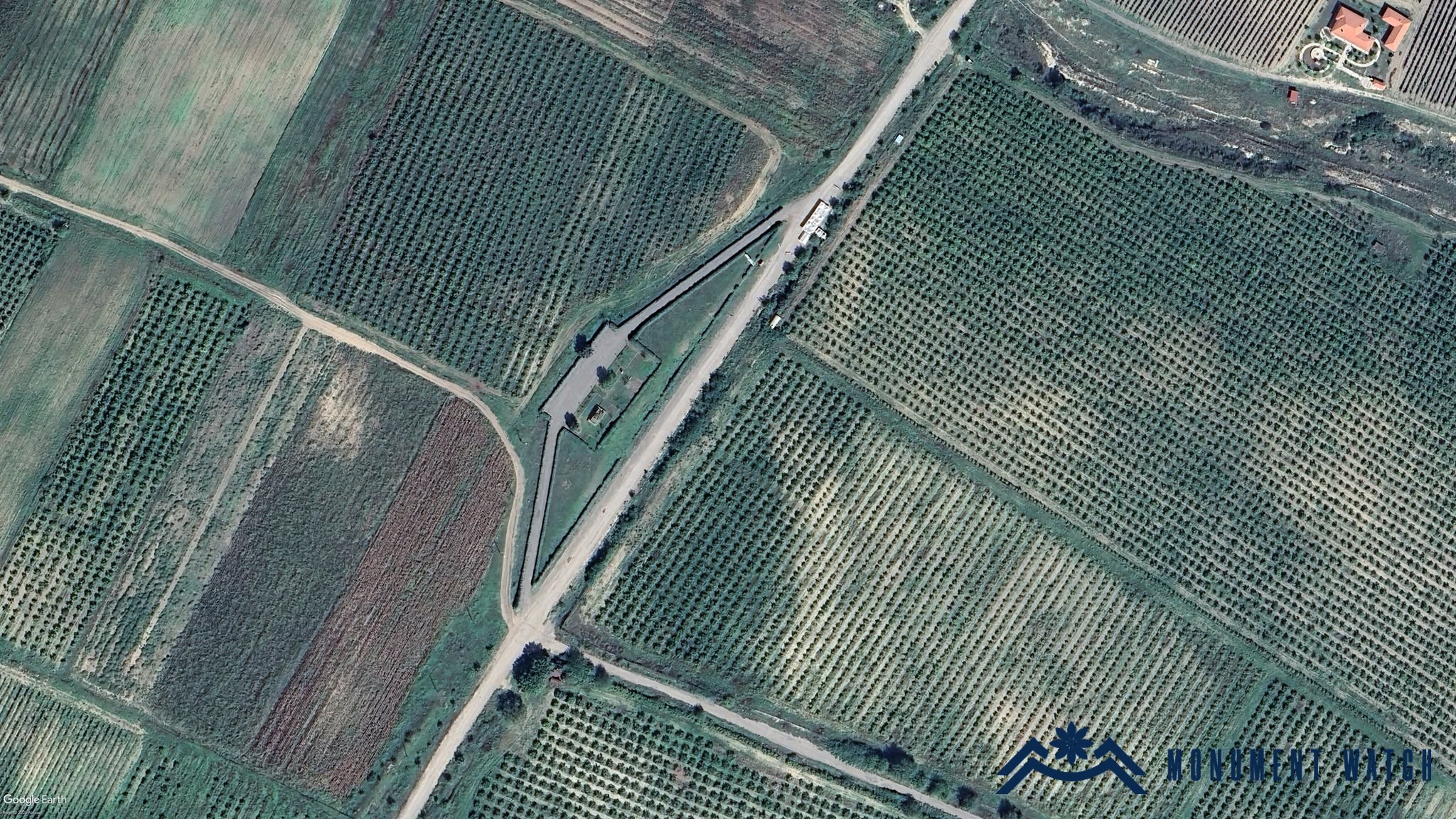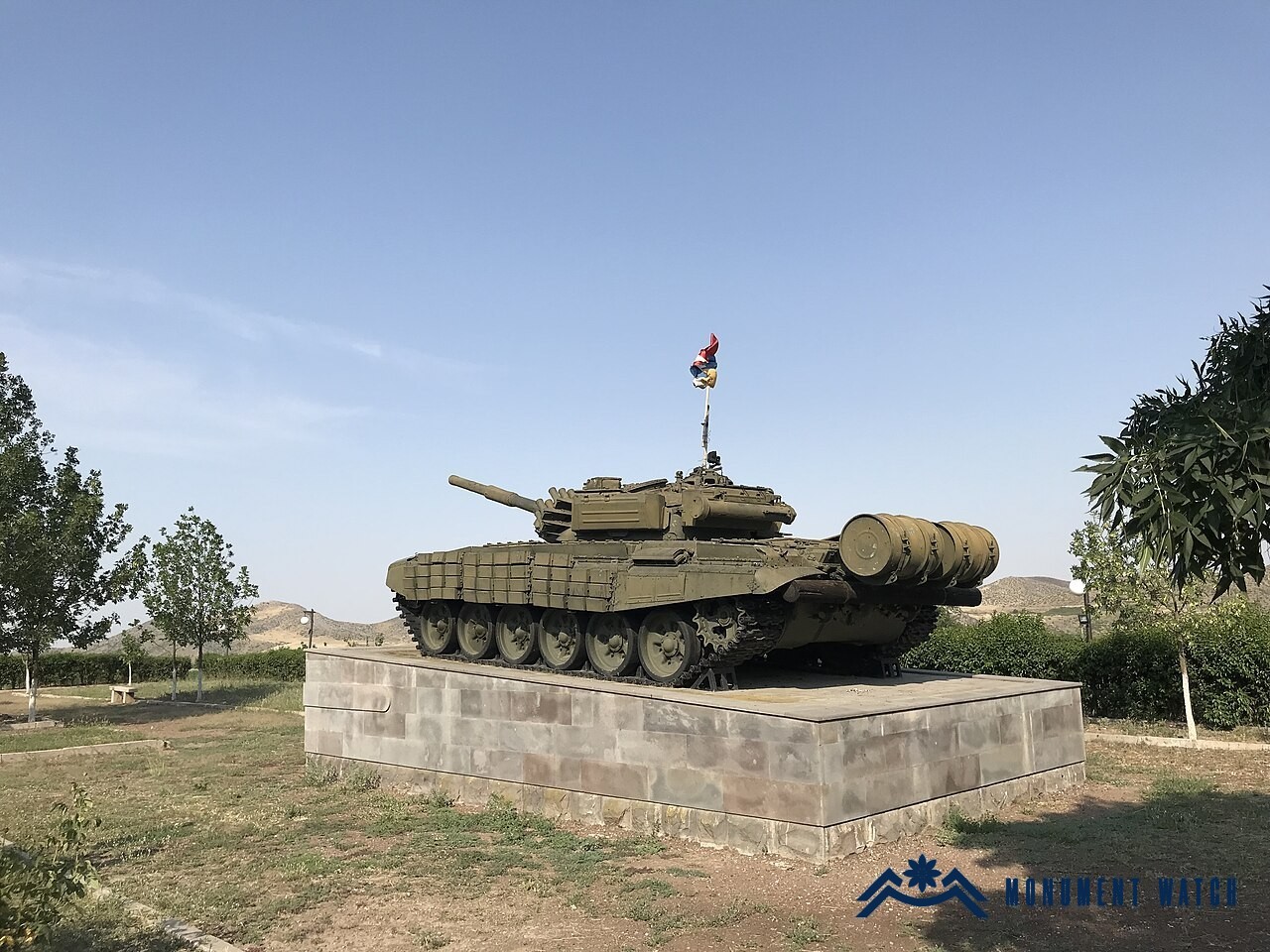The Tank Monument of Askeran Region and the Complex Dedicated to the Fallen of the Patriotic War Have Been Destroyed
Since the 44-day war of 2020, as noted in our numerous publications, one of the mechanisms by which Azerbaijan has been erasing Artsakh's monuments is the destruction of memorials dedicated to the Great Patriotic War. These memorials often form part of larger complexes that also include monuments commemorating the Armenian Genocide, the victims of the Artsakh Liberation War, and other significant events in Armenian history.
Over the past five years, numerous such complexes have already been destroyed in Shushi, Hadrut, Azokh, Mets Taghlar, and other areas.
In May 2025, the Artsakh Cultural Heritage Monitoring Team—through the study of satellite imagery—discovered that using heavy construction equipment, Azerbaijan had demolished the Miraberd (Askeran) memorial complex in the Askeran District. This complex consisted of three khachkars and other essential elements (see Figures 1–3), including:
- A khachkar dedicated to the Independence Day of the Republic of Artsakh (2015).
- A monument honoring the fallen of the Great Patriotic War (1941–1945) (Figure 2).
- The commemorative wall is titled "Glory to the Defenders of the Homeland."
- A khachkar dedicated to the victims of the Sumgait pogroms.
- A sculptural composition showing three soldiers at the base and—above them—the image of the Golden Eagle medal.
- A khachkar modeled after the Jugha cross-stones, erected on the centennial anniversary of the Armenian Genocide (2015) (Figure 3).
The Artsakh Cultural Heritage Monitoring Team extends special thanks to Mihran Danielyan for his advice and cartographic assistance.
Satellite images observed on May 11, 2025, show that between April 2024 and March 2025, heavy machinery had been amassed on the memorial grounds and that the monument complex itself had been destroyed (Figure 4). In contrast, imagery from 2023 had shown the memorial standing intact (Figure 5). The proximate cause of this destruction was the Azerbaijani authorities' new road construction works.
It is worth noting that this memorial complex held great significance for the May holidays. On May 9, residents would gather there to pay tribute to the Great Patriotic War and to honor the heroes of Shushi's liberation. On April 24, it was the site where those martyred in the Armenian Genocide were commemorated. From this perspective, the destruction of the memorial complex also constitutes an assault on the cultural rights of Artsakh Armenians.
Moreover, Azerbaijan has demolished the Tank Monument—dedicated to the Artsakh Liberation War—located on the left side of the road leading from Miraberd (Askeran) toward Tigranakert and Aghdam (see: https://aparaj.am/tankic-tank-dirkhic-dirkh-hyd-ayem-eh-arcaxi-drosheh-bardzracrec-askerani-tank-hushardzanin/). This monument consisted of a stone pedestal, atop which stood a T-72 tank, surrounded by an adjacent grove (Figures 6–7), over which the flag of the Republic of Armenia flew. Satellite images from 2023 showed that the monument was still standing (Figure 8). However, by 2024, those images confirmed that it had been destroyed (Figure 9).
It is important to emphasize that the Askeran Tank Monument held great significance in the lives of Artsakh Armenians. Since the liberation of Shushi in 1992, on every May 9, residents of Askeran District and surrounding areas would visit this monument to pay their respects to the victims of the Artsakh Liberation War. Additionally, the site hosted the solemn military ceremonies in which newly inducted service members of the Artsakh Defense Army took their oaths.
Our Response
The destruction of memorials and khachkars in the Askeran District—dedicated to the fallen of the Patriotic War, the Artsakh Liberation War, and the victims of the Armenian Genocide—violates Article 4 of the 1954 Hague Convention for the Protection of Cultural Property in the Event of Armed Conflict and its Second Protocol of 1999.
The demolition of these structures also contravenes Rules 38, 39, 40, and 41 of international humanitarian law. It is critically important to stress that the International Court of Justice has affirmed that the regulations in force within occupied territories—including those governing the protection of cultural property—have attained the status of customary international law. In other words, they function as universal, non-derogable rules that are binding on all states.
It is also essential to note that targeting khachkars is explicitly prohibited and constitutes a grave crime against humanity because the "Art of Armenian Khachkars: Symbolism and Craftsmanship of Khachkars" has been inscribed since 2010 on UNESCO's Representative List of the Intangible Cultural Heritage of Humanity (adopted in 2003) (see: https://ich.unesco.org/en/RL/armenian-cross-stones-art-symbolism-and-craftsmanship-of-khachkars-00434). This designation recognizes khachkar art as a universal treasure of humanity. Consequently, khachkar craftsmanship enjoys special international protection and represents a vital component of the world's cultural heritage.
